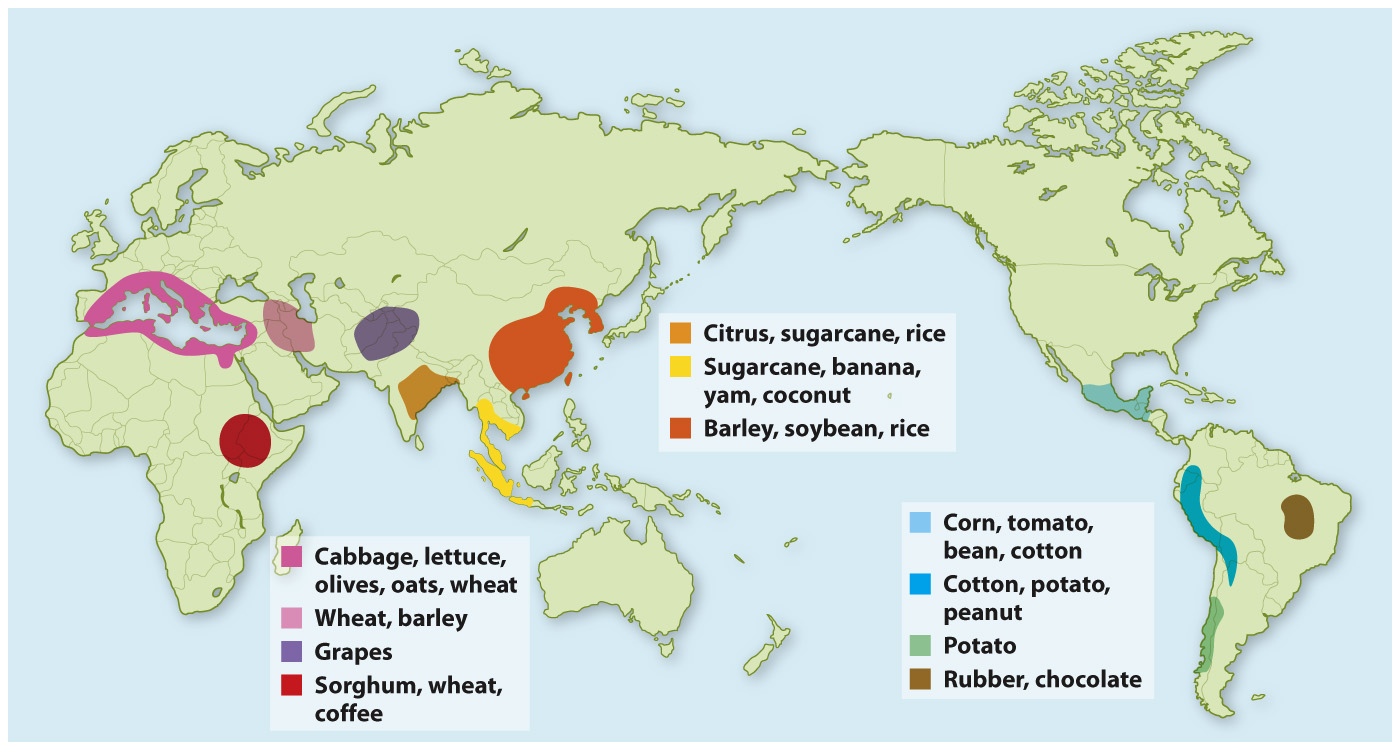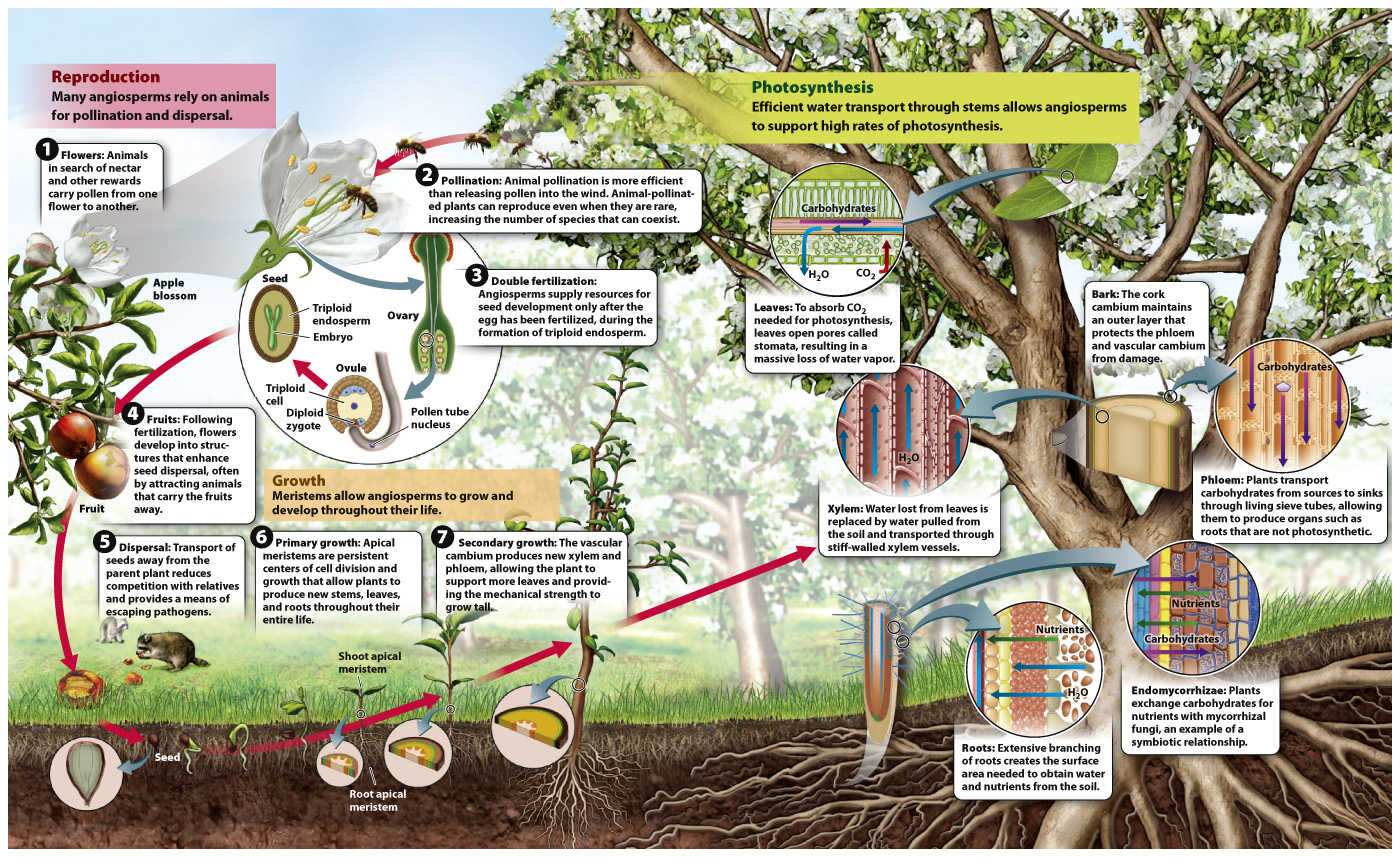CASE 6 AGRICULTURE: FEEDING A GROWING POPULATION
What can be done to protect the genetic diversity of crop species?
Of the more than 400,000 species of plants on Earth today, we eat surprisingly few. Of those we do eat, nearly all are angiosperms. The only exceptions are the female gametophyte of a small number of gymnosperms (pine nuts and ginkgos), as well as the young leaves of a few ferns. Most of the plants we eat come from species that are grown in cultivation, and many of these cultivated species have, as a consequence of artificial selection, lost the ability to survive and reproduce on their own. Of the approximately 200 such domesticated species, 12 account for over 80% of human caloric intake. Just three—
Crop breeders select for varieties that grow well under cultivation and are easy to harvest, but a consequence of selective breeding is a decrease in genetic diversity. Thus, not only do we depend upon a small number of species for food, agriculture itself contributes to a narrowing of plant diversity. Because pathogens and pests continue to evolve, any loss in genetic diversity of crop species creates substantial risks. For example, in 1970, the fungal pathogen Bipolaris maydis, a disease-
Nicolai Vavilov, a Russian botanist and geneticist, was one of the first to recognize the importance of safeguarding the genetic diversity of both crop species and their wild relatives. In the early twentieth century, he mounted a series of expeditions to collect seeds from around the globe. Vavilov’s observations of cultivated plants and their relatives led him to hypothesize that plants had been domesticated in specific locations from which they had subsequently expanded as a result of human migration and commerce (Fig. 33.24). Vavilov called these regions “centers of origin,” and he believed that they coincided with the centers of diversity for both crop species and their wild relatives. In World War II, during the siege of Leningrad in which more than 700,000 people perished, scientists at the Vavilov Institute sought to protect what was then the world’s largest collection of seeds. Their dedication—

Today, seed banks help preserve the genetic diversity of crop species and their wild relatives. However, seed banks can store only a fraction of the genetic diversity present in nature. To help make up the difference, some have suggested establishing protected areas that coincide with Vavilov’s centers of origin. As we discuss in Chapter 49, new threats lie just over the horizon. Meeting these threats will require that every genetic resource be brought to bear.
VISUAL SYNTHESIS
